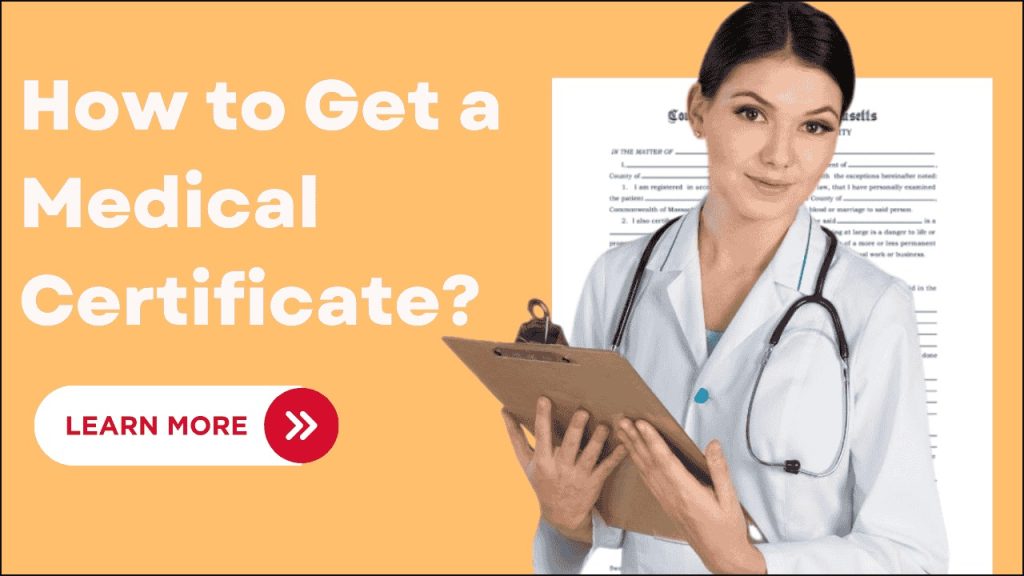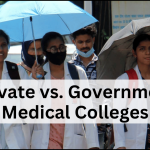
A medical certificate is a document or piece of paper issued by a doctor to a person stating the illness of person. The person needed the medical certificate to show the certificate in schools or their job, or sometimes in court. The certificate ensures that the person has a particular medical condition. The details of the medical certificate are given below.
1. Understand the Purpose of a Medical Certificate
A medical certificate serves different purposes. Before applying, understand why it is needed.
| Purpose | Description |
|---|---|
| Sick Leave | Used to prove illness and justify absence from work or school. |
| Fitness Certificate | Confirms a person is fit to work, travel, or participate in activities. |
| Medical Insurance Claims | Required to claim reimbursement for medical expenses. |
| Legal or Official Use | Used in court cases, visa applications, and government processes. |
Knowing the purpose helps in selecting the right type of certificate and doctor.
2. Choose the Right Doctor or Medical Facility
A medical certificate must be issued by an authorized medical professional. The choice of a doctor depends on the type of certificate needed.
| Type of Certificate | Medical Professional |
|---|---|
| General Sick Leave | General Physician |
| Fitness Certificate | General Practitioner or Specialist |
| Workplace Injury Certificate | Occupational Health Doctor |
| Chronic Illness Certificate | Specialist (e.g., Cardiologist, Neurologist) |
Visiting a certified medical professional ensures the document is valid and accepted.
3. Schedule an Appointment
A prior appointment may be necessary, depending on the doctor and medical facility.
- Visit a nearby clinic or hospital. Some hospitals offer walk-in services, while others require an appointment.
- Check the availability of the doctor. Private clinics often provide faster services compared to government hospitals.
- Mention the purpose of the visit. Inform the receptionist or staff about the need for a medical certificate.
Booking an appointment saves time and ensures smooth processing.
4. Provide Necessary Information
A doctor requires specific details to issue a medical certificate. Providing accurate information helps avoid any issues.
| Information Required | Description |
|---|---|
| Personal Details | Name, age, gender, and contact information. |
| Medical History | Past illnesses, ongoing treatments, and medications. |
| Symptoms or Condition | Explanation of the current health issue. |
| Purpose of Certificate | Clearly stating why the document is needed. |
Furnishing correct details ensures the certificate reflects the true condition.
5. Undergo a Medical Examination
A doctor may conduct a medical check-up to verify the condition. The type of examination depends on the reason for the certificate.
- Basic Check-Up: Involves measuring temperature, blood pressure, and checking symptoms.
- Diagnostic Tests: Blood tests, X-rays, or scans may be needed for specific illnesses.
- Physical Fitness Test: Used for employment, sports, or travel-related certificates.
A thorough examination increases the authenticity of the certificate.
6. Request the Medical Certificate
After the check-up, the doctor prepares the medical certificate. The document usually contains:
- Doctor’s Name and Qualification – Confirms the authenticity of the certificate.
- Patient’s Details – Includes name, age, and medical condition.
- Diagnosis and Findings – Brief description of the illness or medical status.
- Prescribed Treatment or Rest Duration – Mentions the recommended period for recovery.
- Doctor’s Signature and Stamp – Required for the certificate to be legally valid.
Requesting a properly signed and stamped certificate avoids future complications.
7. Verify the Certificate Details
Checking the document before leaving the clinic ensures there are no errors.
| Common Errors | How to Fix |
|---|---|
| Incorrect Name or Details | Request the doctor to correct it immediately. |
| Missing Signature or Stamp | Ask the doctor or clinic staff to complete it. |
| Wrong Diagnosis or Dates | Verify and get it amended before submission. |
Ensuring correctness prevents rejection by employers or authorities.
8. Submit the Certificate to the Concerned Authority
The final step is to submit the document where required. Different institutions have different submission processes.
- Workplace or School: Submit the certificate to HR, the manager, or the school administration.
- Insurance Companies: Attach it to the claim form and send it to the insurance provider.
- Government Offices: Follow the specific guidelines for submission.
Keeping a photocopy for personal records is always recommended.
9. Follow Up if Required
Some authorities may request verification of the medical certificate. In such cases:
- Confirm with the doctor if verification is needed. Some institutions call the clinic to verify the document.
- Check submission status. If the certificate is for leave approval, follow up with HR or administration.
- Provide additional documents if required. Some cases need lab reports or prescriptions.
A follow-up ensures that the certificate serves its intended purpose.
10. Avoid Fake or Fraudulent Medical Certificates
Using fake medical certificates can lead to serious consequences.
| Risk | Consequence |
|---|---|
| Legal Action | Fraudulent certificates may lead to fines or job termination. |
| Loss of Trust | Employers or institutions may not trust future medical claims. |
| Rejection of Leave or Claims | Fake certificates can lead to denial of benefits. |
Getting a genuine medical certificate ensures credibility and avoids complications.
Final Thoughts
A medical certificate is an essential document for various purposes. The doctor who has done the treatment of the person will issue the medical certificate specifying the illness name, and other details like how many days the person was admitted to the hospital, etc. The person can apply for sick leave, fitness verification, and insurance claims with the help of a medical certificate.








